Tuesday, 16 April 2024
Menu
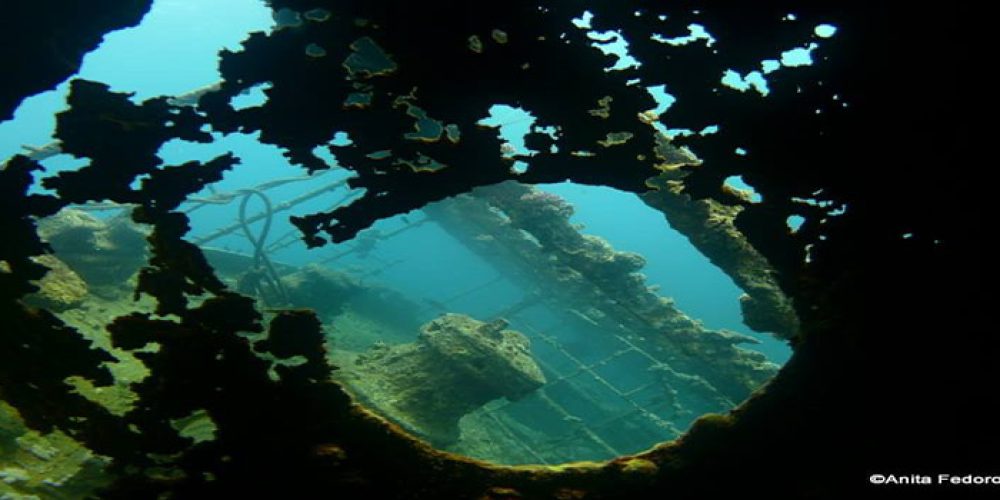
The ship was built by the Schiffswerks Rieherst company in the Hamburg shipyard and launched under the name Bahia Blanca on 30 December 1911 as a cargo and passenger ship. She could take up to 2,000 passengers and 9,000 tons of cargo on board. She sailed between Hamburg and South America, carrying passengers and goods.
World War I found the ship in Argentina and Bahia Blanca was taken over by the Argentine government. The ship sailed under the Argentine flag until the mid-1930s, when it was purchased by the Italian government and modernised. The name was also changed and from then on the vessel was known as Umbria. In the following years, the ship sailed mainly in the Mediterranean Sea and the Red Sea, delivering supplies to Italian colonies in Africa.
The dramatic story of the sinking
On its last voyage to Massawa and Asab in Eritrea, then an Italian colony, Umbria set sail from Italy in May 1940, taking on board, among other things, more than 360,000 bombs weighing between 15 and 100 kg, 60 crates of detonators, bags of cement, three Fiat Topolino Lungo, 8600 tonnes of ammunition and 1500 bottles of Prosecco. Although World War II was already underway, at that time Italy was still a neutral country. However, everyone realised that joining the war was only a matter of time. Umbria had the task of supplying armaments to the Italian colonies in East Africa to strengthen their defences and enable future Italian expansion into the Black Continent.
On 3 June 1940, Umbria sailed into Port Said in northern Egypt, where she loaded 1,000 tons of coal and water, trying to look like a normal merchant ship. The port, controlled by the British Royal Navy, only agreed to allow Umbria to pass through the Suez Canal into the Red Sea after three days. The detention took place under the guise of discrepancies in paperwork. The British were well aware of the cargo Umbria was carrying and that sooner or later it would be used against the Allies. They wanted to delay as much as possible, or prevent the unit from delivering it to its destination. However, the British could not hold Umbria belonging to neutral Italy indefinitely. The Italians could carry whatever they wanted to their African colonies and eventually the ship was allowed to enter the Red Sea on 6 June 1940. However, it was followed by the ship HMS Grimsby, under the command of Capt. Lt. Stevens.
So Umbria set off south, but was again stopped by HMS Grimsby at the gates of Port Sudan, the southernmost major port belonging to the British Empire (Sudan, like Egypt, was at that time a British colony), off Wingate Reef, on 9 June 1940. Captain Stevens and 22 British soldiers from the cruiser HMS Leander boarded the ship, under the guise of searching for contraband. The first thing the British did after entering was to seize the radio station so that Umbria could not communicate with the command. Everyone realised that the outbreak of war was a matter of days. So Umbria spent the night at anchor, with the English on board and the ship HMS Grimsby blocking her ability to sail away.
On the morning of 10 June 1940, the captain of the Umbria, Lorenzo Muiesan, heard through his small pocket radio, which the British could not find, Mussolini’s speech declaring Italy’s entry into the war. At that moment he was the only person on board who was aware of it. Captain Muiesan was a great patriot and did not want the precious cargo of the Umbria to fall into enemy hands, as he was well aware that it would be used against his country, but there was little he could do with British soldiers on board.
The situation was dramatic. The Italian captain had to act quickly. The only way to prevent the precious cargo from being seized was to sink the ship, but this was extremely difficult to do. Captain Muiesan took advantage of the fact that the British did not realise that the war between the Allies and Italy had already begun and asked the British officers if he could organise a rescue exercise to boost the morale of the bored crew. The British agreed. The moment all the crew were in the lifeboats, Captain Lorenzo Muiesan ordered the first engineer to unscrew all the valves and sink the Umbria. The astonished British could only watch the slow sinking of the ship, which in a matter of minutes settled on the reef where it was moored. When Stevens asked Captain Umbri why he had done this, Muiesan explained that a declaration of war had been made and from that moment on they were enemies. Captain Stevens being impressed by Muiesan’s act courteously replied that they were not enemies but friends. However, this did not help the captain much. A day later, he and all the rescued crew were interned and spent the rest of the war in a prisoner of war camp in India, from which, however, many did not return.
The captain’s decision aroused mixed feelings and became the subject of much debate. For some, the sinking of the Umbri was the first heroic act performed by the Italians during World War II, while others condemned it completely. History proved very cruel to the Captain and his crew. After the end of the war and their return to Italy – under the pretext that the sinking of the Umbria took place the day before the official start of the war – Italian bureaucrats refused to pay compensation to the crew of the Umbria for the many years of suffering in Indian prisons.
Umbria, on the other hand, with all her dangerous cargo still lies 5 km from Port Sudan, exactly where she sank. If it were not for its explosive cargo and the dramatic story of its sinking, as well as its enormous attraction for divers, its history would probably be forgotten. But Umbria will be remembered by the hundreds of diving tourists who come to Sudan every year.
Wreck diving
Umbria lies on Wingate reef on the port side, tilted at an angle of slightly more than 45º, about 5 km off Port Sudan. Exactly in the same place where she sank. You can still admire the overgrown coral chains and her anchors, cast between rocks on the reef not far from the wreck. Umbria lies quite shallow and in this respect is an easy wreck to explore. The bow is at just over 30 metres and the stern a little shallower. Some of the broken masts of the bridge still almost reach the surface. Visibility is quite good, at least 20-30 metres, and the water here is calm and without currents, as the wreck is surrounded on all sides by a reef.
Dive boats are usually moored some distance from the wreck, which is reached by dinghy. As a result, the Umbria has survived undamaged since the sinking. The ship has no mechanical damage from bomb explosions or collisions with the reef like other wrecks – her current appearance is due only to the passage of time. The wooden decks have suffered the most damage, which can practically no longer be seen, and masts and chimneys have collapsed due to corrosion and storms.
The dives on Umbria start from the great ship’s screw and rudder, which are well preserved and completely overgrown with corals. By going under the rudder you can swim under the whole wreck and emerge on its left side, just under the fourth hold. It is also possible to circumnavigate the wreck from the stern, admiring the metal openwork of the stern decks. When circumnavigating Umbria, it is worth swimming a few metres away from the wreck to see her in all her glory.
We continue our dive on the left side of the wreck, past the main deck we move slowly towards the bow, admiring one by one all the holds, the broken masts, the bridge. And there is a lot to admire! The ship is 155 metres long and over 18 metres wide. Since it was not destroyed by any explosion, it is perfectly preserved and relatively easy to explore.
Umbria has 5 holds to present, the most attractive of which are the three holds on the bow side, as well as the engine room, restaurant and galley. There are two long open passageways on the starboard and port sides, which are easily navigable. On the bottom, at a depth of about 35 metres, halfway along the wreck, on either side of a fallen chimney, lie two lifeboats. Through portholes and other openings we can also look inside the wreck. Since Umbria lies quite shallow, a lot of light reaches the inside, so that the use of torches in many places is completely unnecessary.
On the bow we can see well-preserved lifts and anchor chains. Here it is also worth sailing a few metres from the wreck to see the full majesty of Umbria. On the way back we penetrate the upper deck from the starboard side. This part of the wreck is quite shallow and resembles a coral garden.
The wreck also serves as a shelter for many sea creatures. Various hard and soft corals, giant shells and anemones cover almost its entire surface. In some places it is so densely overgrown that not even a piece of metal construction is visible. There are also plenty of small and large fish, which will please the eye not only of fauna lovers.
As the return route runs at a depth of 5-10 metres, it can be used very well as a safety stop. The pontoons are waiting for the divers moored to the stern of the wreck.
What treasures does Umbria hide in its interior?
Umbria’s explosive treasures mean that the underwater rule “don’t touch anything” must be strictly enforced here. There is still the danger that thousands of bombs with their detonators (the bombs are not armed) could explode. Studies carried out by the British after the war revealed that the explosive force of the explosives stored on the ship would be so great that it would wipe out the whole of Port Sudan lying some 10 kilometres away.
Engine room
In the middle of the wreck, just in front of a huge fallen chimney, there is the entrance to the engine room. We enter a huge chamber, at the bottom of which there are metal stairs, and behind them 6 huge pressure tanks for steam, which once powered the ship’s two engines and its two screws, as well as plenty of instruments, manometers and something that may look like a telegraph. Here there is little daylight and the use of torches is essential. On the right we can see a workshop with tools completely overgrown by coral.
Restaurant
A long corridor, illuminated by the sunlight coming through the portholes, leads to the restaurant (mess hall). Every lover of underwater photography will be delighted with the photo opportunities and the play of light and shadow that can be seen here, as well as the amazing atmosphere of this place.
The restaurant, which you enter through a small doorway, is a little more dark and mysterious, still with the remains of tables and a wooden floor that slowly succumbs to the passage of time, creating an eerie structure.
Bridge
Two interesting interior corridors along starboard and port side with officers’ rooms, bathrooms and workshops. From the deeper corridor you can access the kitchen and kitchen back rooms.
Kitchen
Small room located below the restaurant. It accommodates a maximum of 2-3 divers at a time. Here you can see 2 pizza ovens and a large bowl for mechanically kneading the dough. We mustn’t forget that this was an Italian ship! This is the darkest part of the wreck, where not even a ray of daylight can reach. In the next room we can find pots and large pans in a huge chest.
Charging stations
The three holds at the bow are the best preserved and probably the most interesting to penetrate. Each of them hides an explosive cargo accessible on three levels. As Umbria lies to starboard, all the cargo has shifted and is lying in the lower part, covering some of the passageways, while the upper part has enough space to accommodate a group of divers.
In the first hold we can see the crew quarters, with the remains of beds, crates full of explosives and metal barrels.
In the second hold on the right, the mossy bottles of Prosecco wine – or rather wine bottles, as they are mostly empty – immediately catch our eye. Deeper down we can see crates of ammunition and detonators. Some of the packages have already fallen apart, so that the cartridges lie on top.
To the left of the hold is the “Wall of Death”, a huge pile of giant aerial bombs stacked on top of each other. More than 5,000 tonnes of explosives gathered in one place is very impressive.
The attraction of the third hold are 3 Fiat Topolino 1100s in the Lungo version, that is, the extended version, made especially for moving in deserts. They lie on their side, one on top of the other, squeezed into a small hatch on the first level of the hold. The cars are perfectly preserved despite the passage of time and even have glass in the windows. We swim around them from the right side, being very careful not to pick up silt from the bottom with a careless move of the fins and reduce the visibility of the next divers. There is not much space and it is not easy to get here. At these deeper levels we can also see a wall made of petrified sacks full of cement and wooden boxes full of explosives.
The two holds near the stern are not well preserved and are mostly collapsed. However, here you can also admire ammunition boxes and aerial bombs.
Diving on this wreck will appeal not only to lovers of “metal”. Here you can feel for a moment like a pioneer and explorer, because with each dive on the wreck you can see something new. There are only a few diving boats in the Sudanese Red Sea, so we usually have the whole wreck all to ourselves and can penetrate it in any way we like.
The wreck is still unspoilt, given over to nature. There are no signs of exploration or devastation, as can be seen in the case of another famous Red Sea wreck, the Thistlegorm, located in Egypt and visited by hundreds of divers every day.
There is a chance that it will remain intact for years to come, showing its mysterious beauty to future generations of divers.
Umbria can only be visited by taking one of several safari boats sailing in Sudan. The author is an instructor and guide on one of them, the boat Dolce Vita, sailing for the oldest company organizing diving safaris in Sudan – Blu Dive and Dream Red Sea – www.blusudan.com.

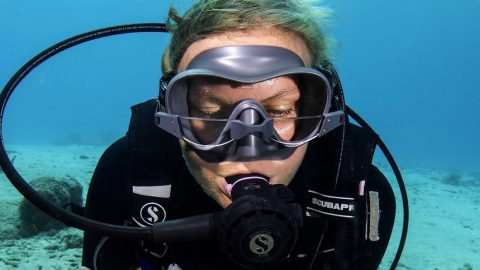




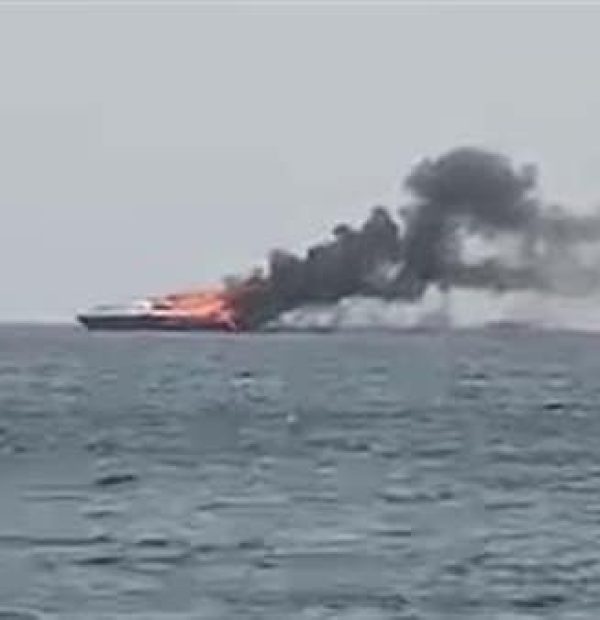
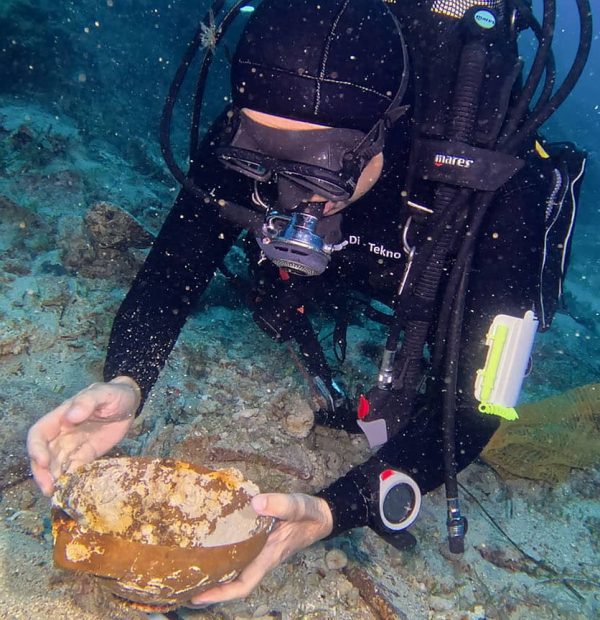
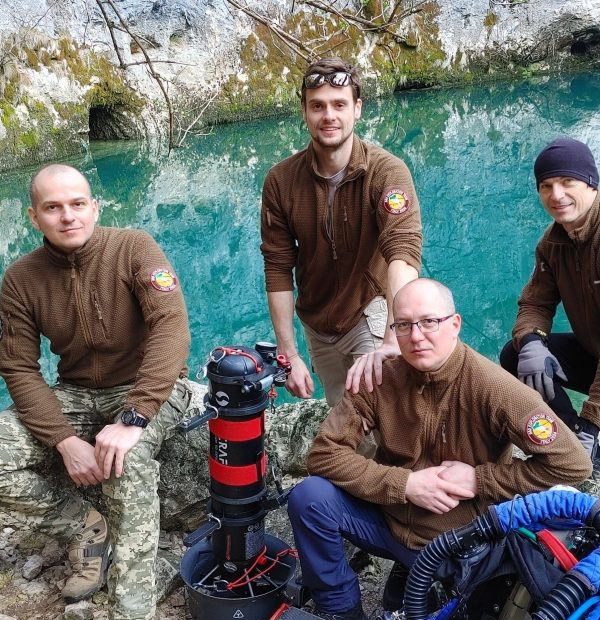

Welcome to DIVERS24.COM, your daily source of scuba news, freediving, scuba diving information, and equipment reviews. Our comprehensive coverage of the dive industry from A to Z provides you with all the latest scuba news, training updates, underwater photography tips, and everything else related to scuba diving. Whether you’re a beginner or an experienced diver looking for more knowledge about scuba gear or techniques – we’ve got it covered! With our in-depth articles written by experienced divers who have been there and done that, you are sure to find exactly what you need here at Divers24.com. Dive into scuba news today!
Underwater Media Sp. z o.o.
Szafarnia 11/F8,
80-755 Gdansk, Poland
Welcome to DIVERS24.COM, your daily source of scuba news, freediving, and scuba diving information. Sign in for a weekly news update and discount coupons for dive gear and apparel.
@2023 - underwatermedia.pl. All Right Reserved. Designed and Developed by Tworzenie stron internetowych Gdansk

The Divers24 portal is currently the largest online medium treating diving in Poland. Since 2010 we have been providing interesting and important information from Poland and around the world on all forms of diving and related activities.
Contact us: info@divers24.com